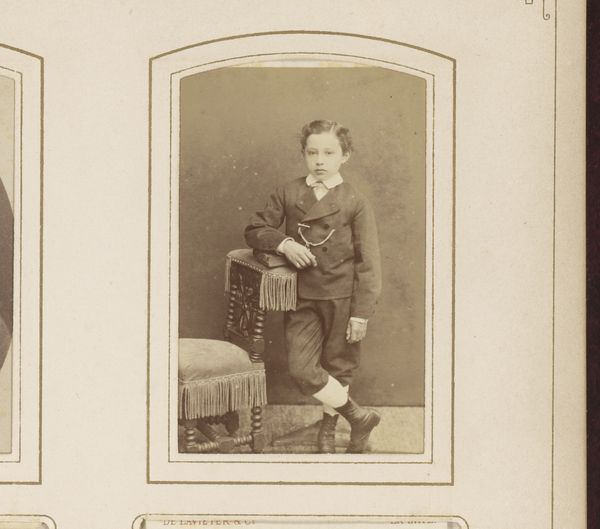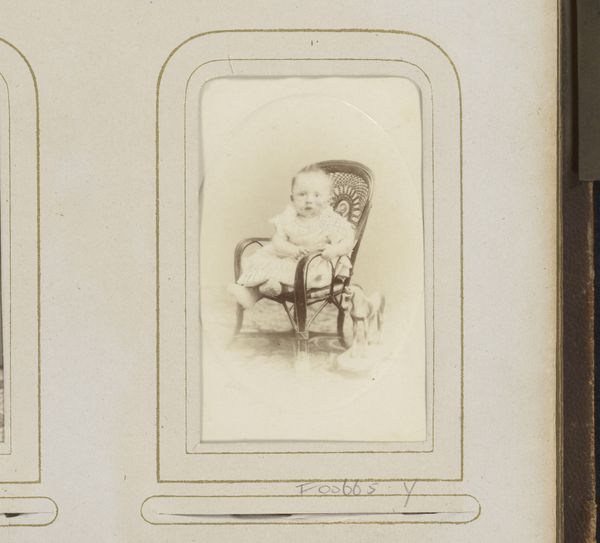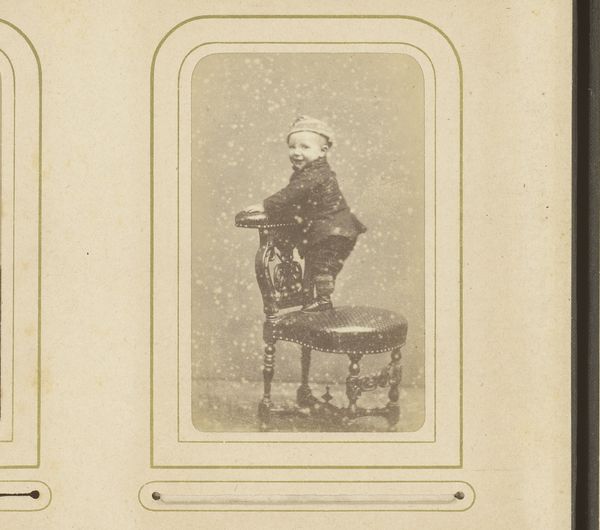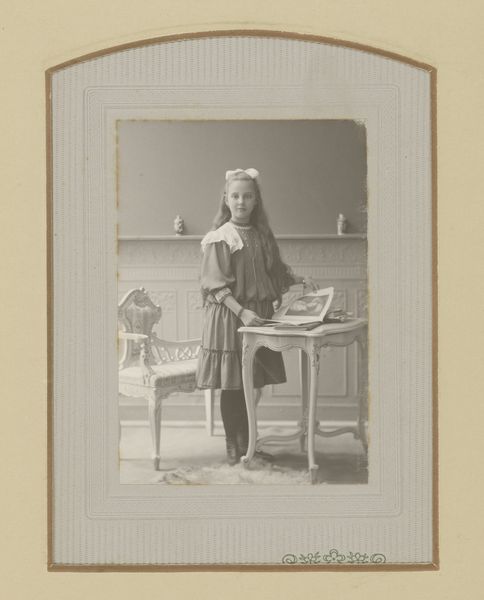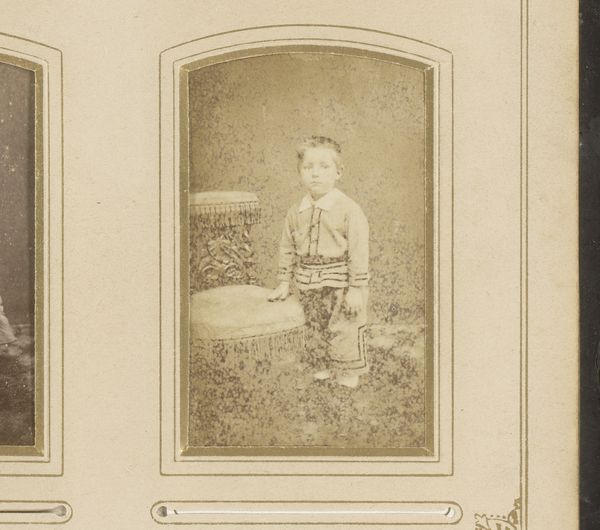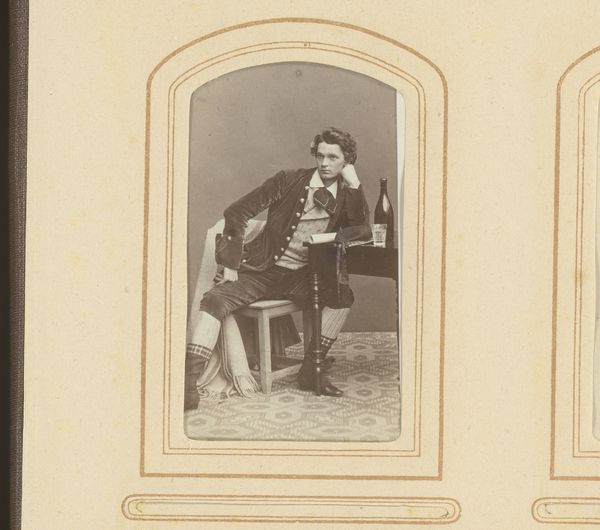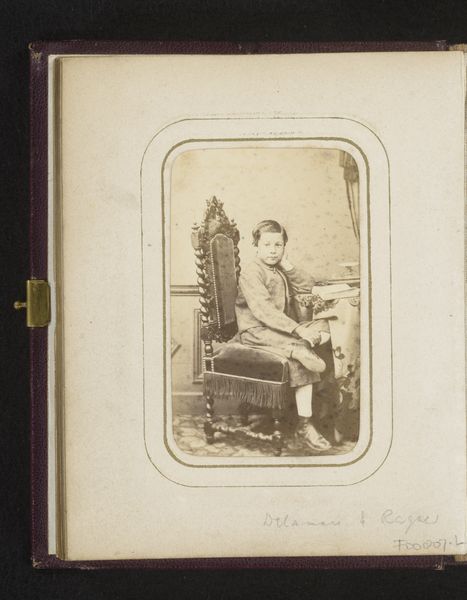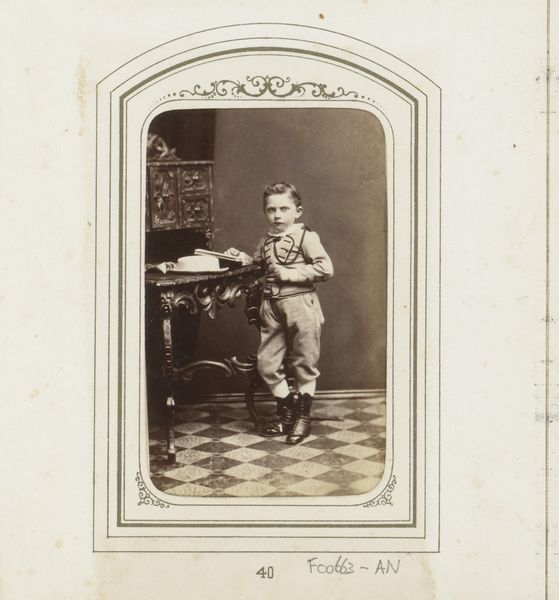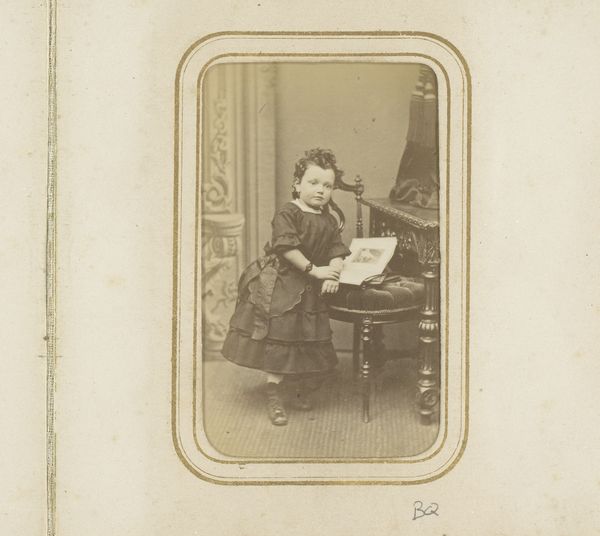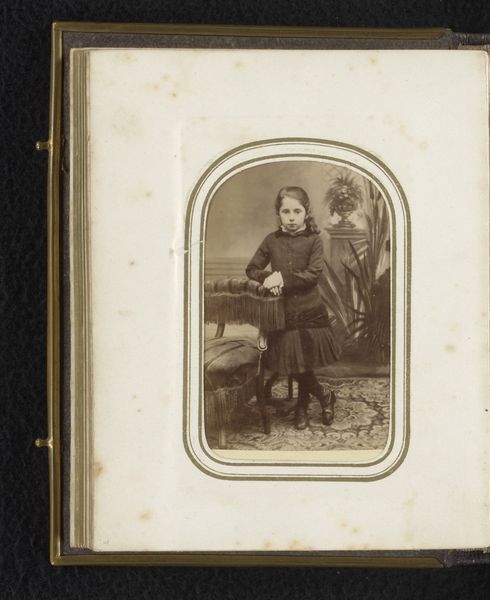
photography
#
portrait
#
photography
#
genre-painting
#
realism
Dimensions: height 81 mm, width 52 mm
Copyright: Rijks Museum: Open Domain
H. Jacobi made this photograph, titled *Portret van een jongen op een stoel, met wandelstok in de hand,* in Barman. The image represents a boy who appears to be from a wealthy family, given the fact that he is sitting in an ornate chair in front of a painted pastoral landscape. The boy is holding a cane, which could imply that he is trying to come across as dignified and older than he is. This image was probably made in the late nineteenth century, when Germany was rapidly industrializing and expanding its colonial empire. During this time photography studios exploded in popularity. As such, *Portret van een jongen op een stoel, met wandelstok in de hand*, is a powerful illustration of the burgeoning middle class, as well as how the institutions of art, like photography, have shaped class structures by encouraging people to perform for the camera. To fully understand this artwork, it's important to research the history of photography in Germany as well as consider the country’s social and political climate at the time. This reveals how art is deeply entwined with the social and institutional context in which it is created and consumed.
Comments
No comments
Be the first to comment and join the conversation on the ultimate creative platform.

